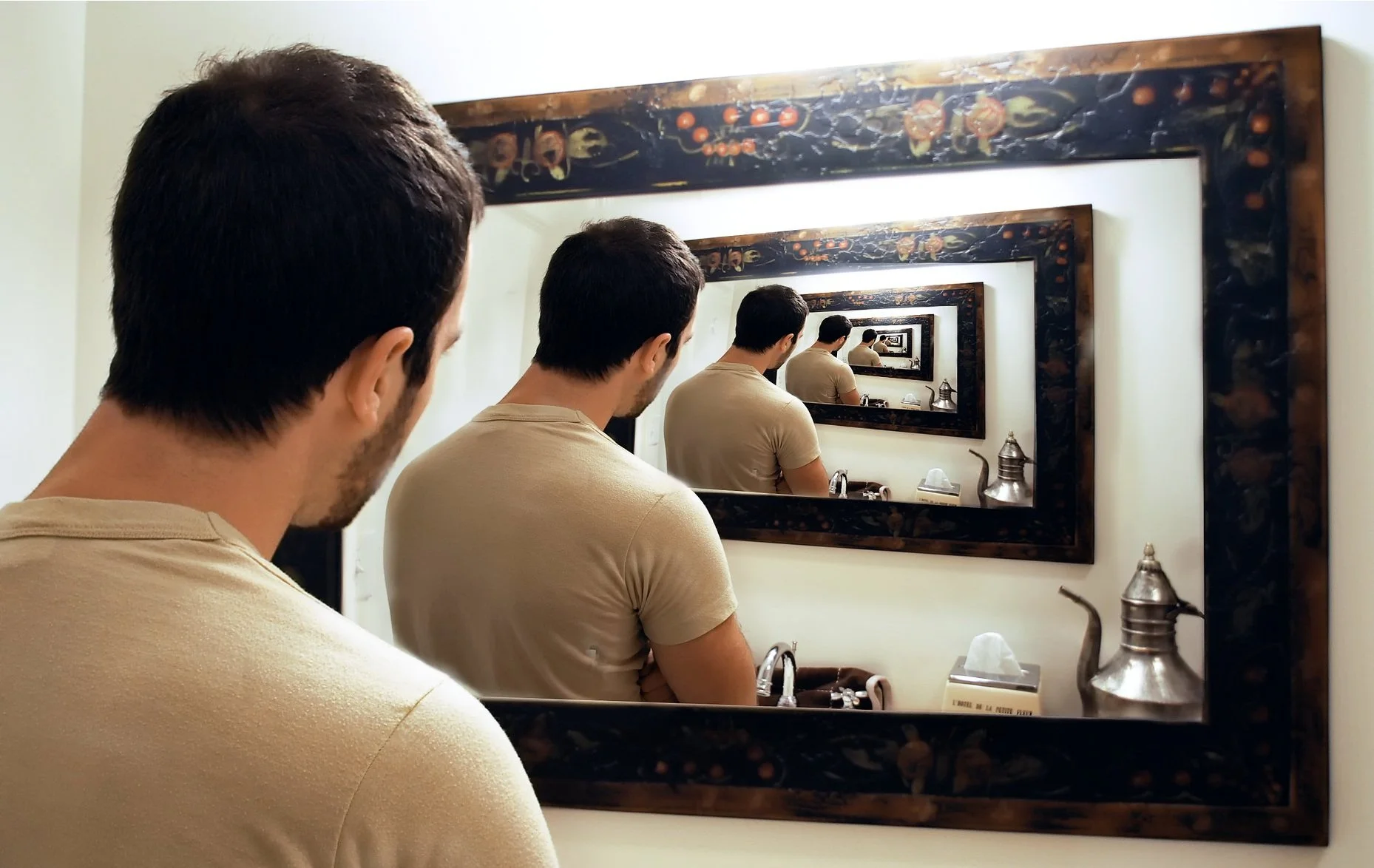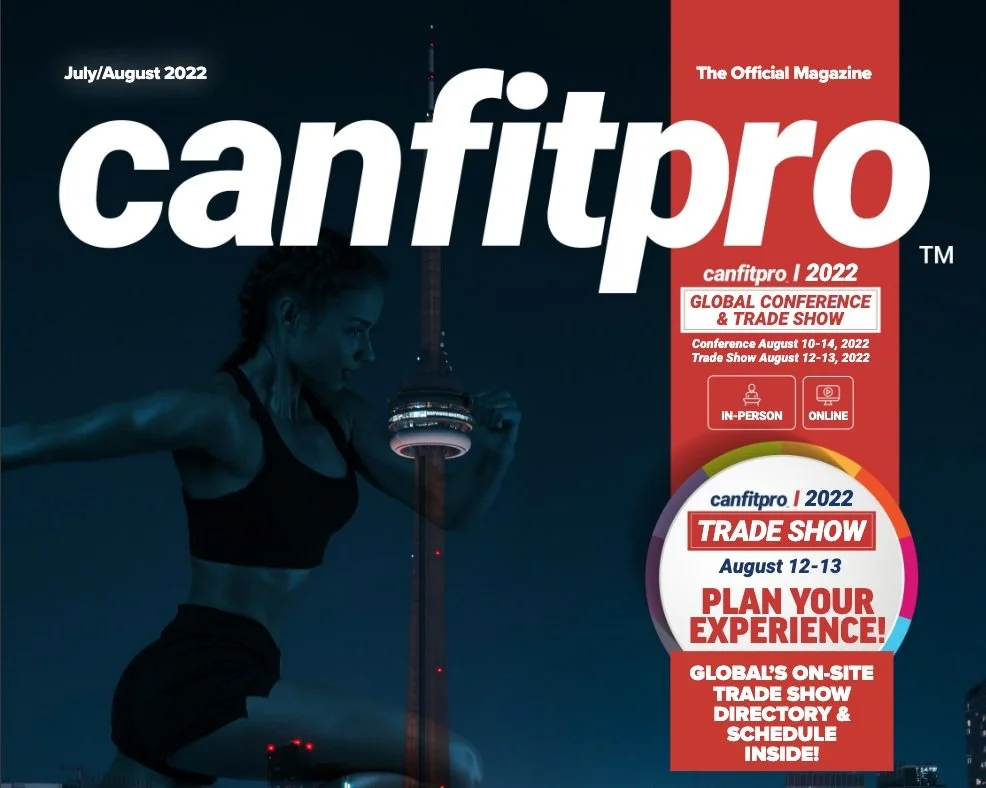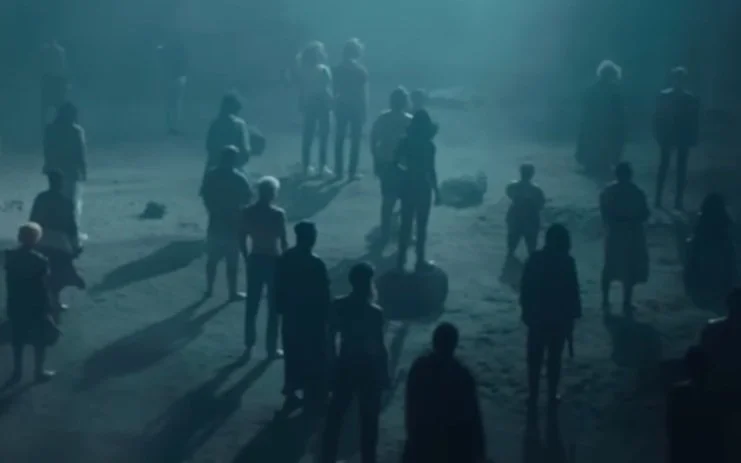2022-2023 Blogs and Articles
We are very sad to report the passing of John Nightingale, former Vancouver Aquarium CEO, and friend, mentor and contributor to Retool Lab. He died of cancer Monday, June 5, at the age of 75, in Vernon, B.C.
"Who knows your story? You know “the ask” is part of your job, but what about “the tell”? When Ryan Reynolds and his partner Rob McElhenney bought a Welsh football team, the first thing they did to turn around its fortunes was tell a story. Now just about everyone has heard of Wrexham. The Ontario Science Centre and Scarborough General Hospital could learn this lesson. If it makes them feel any better, the National Geographic Society has been doing it for years. Does it work? You be the judge…"
One of the most potent but under-utilized and usually overlooked branding tools a university has is publishing. The message is as evergreen and relevant as it always was: for universities and museums that want to be seen as leaders in the marketplace of ideas, it’s still a case of “publish or perish.”
In a previous article, I promised to further explore the topic of brand governance best practices as we move toward a new digital marketing frontier that promises us rich interactive, virtual, and immersive brand experiences. This first article deals mainly with the state of brand governance as it is and attempts to set a clearer and broader set of priorities moving forward.
The current McKinsey episode has surfaced concerns that advisory firms are starting to play a bigger role in decisions about policy – the “what” government chooses to do, as opposed to “how” it does it. It has also raised concerns that the public sector can become too dependent on outside firms with a profit motive and an interest in generating future work and billings.
Gone are the days of leaving brand governance on autopilot. The rise of social media, e-commerce, and mobile payments has already created a more challenging environment for brands to operate in; one that is constantly in flux. But when you consider the rapid, albeit inconsistent advances of the metaverse and how it is anticipated to affect many brands’ engagement strategies, the picture gets even murkier.
This article, the fifth and last in the Fit to Brand series on branding published in canfitpro’s Business Journal, will help guide you toward the development of a tool kit to leverage the communication channels to grow your gym and fitness coaching brand and business. It is reproduced here with permission. You can review it here or on canfirpro’s publication at https://issuu.com/canfitpro/docs/nov-dec-22_layout_online_v3 - pages 26-28
Why are many professional services firms having difficulties creating a clear differentiation between their brand and that of their competitors? In our branding practice, we often get the privilege to work with entrepreneurial and professional services companies. Our work with these organizations usually includes assisting them in the development of a brand positioning to help a company present a unique value proposition to its intended audience in a competitive market space.
This is the fourth in a series of articles on branding appearing in the Fitness Business Journal of the Canadian Fitness Professionals’ #canfitpro magazine. Your Brand Look & Feel focuses on the creation of your visual brand style, because developing a brand identity doesn’t end with the creation of a logo. It is reproduced here with permission.
This is the third in a series of articles on branding appearing in the Fitness Business Journal of the Canadian Fitness Professionals’ #canfitpro magazine. This article focuses on the development of the first and central component of a brand’s visual identity: the logo. It appears in the July-August 2022 issue of the magazine, and is reproduced here with permission by Canfitpro. https://issuu.com/canfitpro/docs/online-jul-aug-22
The Royal Ontario Museum’s “rebranding” campaign succeeds only in telling us that the ROM hasn’t developed a vision for what it can become, and that it lacks the imagination necessary to help transform the nature of its relationship to the broader global community. They could have thought more fundamentally about how a museum can fulfill its mission, but they chose not to, and so will remain little more than a local venue with limited appeal and ability to attract visitors.
This article is a response to Why the Cultural Sector Needs a Digital Remake, an article by Ricard Gil, associate professor and Distinguished Faculty Fellow of Business Economics at Smith School of Business at Queen’s University
This is the second in a series of articles on branding appearing in the Fitness Business Journal of the Canadian Fitness Professionals’ #canfitpro magazine. The subject of this article is verbal identity, focusing on developing a business name. It appears in the May-June 2022 issue of the magazine, and is reproduced here with permission by Canfitpro. shorturl.at/cerJM
Indigenous artifacts are being repatriated. Working with First Nations, Métis, and Inuit communities, our museums can play a better role in the Truth and Reconciliation process as “amplifiers,” not as “keepers” of history.
Divining the Canadian identity is an endless process. We’ve always used storytelling to convey who we are as a country, but can we figure out how to effectively leverage it to engage new audiences in this Age of YouTube? Museums don’t really tell their stories beyond their buildings and don’t reach broader audiences. And that’s where they make a mistake.
Ryerson University’s new name feels more like it was an engineered hasty retreat toward the least potentially offensive and anodyne name one could imagine. A name that offends no one, communicates nothing, and evokes no sense of the essence or values of the institution, a name that does nothing other than, in the most trivial way possible, grants the viewer the means to locate it on a map.
PLANNING FOR YOUR BRAND is the first in a new series of articles entitled FIT TO BRAND, appearing in Canadian Fitness Professionals’ #canfitpro magazine. It deals with the preparation work essential in the development and launch of a successful brand. Written with the fitness professional in mind, the series applies equally well to small and medium-sized organizations of various types. It appears in the March-April 2022 issue of the magazine, and is reproduced here with permission.
Amid a lack of fresh, clearly communicated ideas, Canadian museums have, during the pandemic, stopped interacting with people. With few stories to read, watch or listen to, and barely any new ideas to challenge thinking, they are emerging from the pandemic worse off than before, having failed to use this opportunity to rethink their singularly antiquated approach on how to successfully engage with Canadians.
2021 Blog Posts and Articles
There has never been a more important time for Canadians to understand themselves and that means giving consideration to the role our national museums play as sources of reliable information. It is important to rethink how Canada’s national museums collaborate to build and communicate a single national museum brand that tells the Canadian story.
Your organization may be compelled to rename itself for a variety of reasons that have been imposed by circumstances, or it may choose to do so for reasons all its own. Whatever the reason(s), launching into the creation of new name should be seen as a unique opportunity to redefine yourself and your purpose. Should you decide to do this, it may well prove to be one of the most challenging things you will ever undertake.. This is why we offer what we believe are the key considerations in the development and selection of any brand name so that you can go into this process with confidence and with eyes wide open.
What does the brand name sound like? It’s particularly important to stop and consider what the creative convolution that is the new name may purposely and unwittingly evoke when spoken out loud? This is not something you’ll find much written about, yet it’s a critical aspect of brand naming.
Many institutions and public entities are currently undertaking reviews of their own brand, and the trend that we are currently seeing and that is driven by our more enlightened attitudes as a society, is only likely to accelerate. Ryerson University is the latest to pull the trigger. Here’s just a sample of what’s about to hit them.
The Olympic rings are justly famous, but they still have to keep telling their stories. In order to compete for athletes, second-tier sports need to have their brands shown to wider audiences. Can individual sports federations go-it alone, or should they be under a larger umbrella?
Imagine a world where larger charities were suddenly required to give more money away each year. Those funds would trickle-down to smaller organizations, right? Unfortunately, there is little evidence that suggests that this will be the case. Smaller organisations might want to consider fixing what ails them today instead of waiting for the playing field to tilt in their favour.
If telling a more diverse selection of stories represents a way ahead for society, museum publishing can be a catalyst for positive societal change. It’s also how museums themselves can get ahead. “Place” is limiting. If museums refine their approach to outreach they will secure new audiences, hold their attention, and earn their trust.
For museums, galleries, libraries and archives, digital transformation should actually be transformative, and not simply approached as an adjunct ingredient in an outmoded and limiting operational model.
As the leading association of museums in Canadas and the sector’s thought leader, the Canadian Museum Association should be coming up with ideas for a post-pandemic turnaround strategy, instead of delegating the task to the Ministry of Canadian Heritage, hoping that it would take responsibility for a new national museum policy.
Investors understand the importance of a diversified portfolio strategy in order to mitigate risk and limit their downside exposure. Putting all eggs in a single basket is never good practice, yet, it seems that when it comes to investing in their fundraising activities, most nonprofits still insist on this approach, rather than looking to diversify and evolve their strategies. Like all good portfolio managers, fundraising leaders need to assess their organisation’s tolerance for risk and combine a variety of different strategies to tackle the changing fundraising landscape rather than to continue to play it safe, by taking familiar but increasingly ineffective paths.
Effective branding is an elusive concept for Canadian universities. They aren’t equipped to compete for mindshare against global competitors for whom the cycle of research, accomplishment, and communication is a deeply engrained practice because they don’t articulate their uniqueness or try embedding perceptions of themselves as thought leaders. Without this, they can’t position themselves as leaders in the marketplace of ideas. Queens’ University’s plan to become a “globally recognized brand” may be ill-fated if it fails to recognize the prerequisites to achieve their ambitious goal.
The Washington Post realized at some point that sticking to its original mission meant putting its future in jeopardy. Its transformation – from hyper-focused newspaper with a local identity, to highly-influential national news organization with global reach – holds lessons for organizations everywhere that are currently facing challenges.
If nonprofit institutions are to remain relevant and effective in addressing societal and cultural issues, the sector’s leaders must ask themselves what they can do, individually and collectively, to help America rebuild its diminished sense of community and mend its fractured values?
Is the charitable sector in a fundraising crisis? Donations are down across the country, competition has increased, and the big players are receiving the lion's share of the donated assets. Competing for donations in this environment requires imagination and vision. Fortunately, answers may be hiding in plain sight.
Accredited zoos are important environmental institutions. Their science-based work goes to the core of the survival of animal species, and produces crucial research on the effects of climate change in our global ecosystem. So why should they be struggling at this time of pandemic? That’s because, for the most part, their branding simply isn’t on par with their mission, and their revenue model is equally faulty.
Rolling Stone magazine’s A Race to the Bottom: Why Museums Need a Digital Strategy, is a testament to the timeliness, relevancy and urgency of this message to our cultural institution leaders everywhere. But why does it take media and culture publication, to tell cultural institution leaders what they should already know?
The COVID Year Special Collection
The coronavirus outbreak should make museums and other cultural institutions stop and ask themselves: can our tried-and-true business model and our assumptions about our public value render us vulnerable to the disruptions a global pandemic may inflict? Relying on visitorship for your survival may no longer be a satisfactory approach. You’re storytellers. How do you get your story out and keep people engaged if they stop coming?
No more visitors, no more revenue. It’s as simple as that. What’s a museum to do in this unprecedented time? The prediction is that museums will start augmenting their online presence, but what will they say? This should be a time to do more than remind people museums simply exist. Is it enough to offer online tours?
Can museums and countless other cultural venues think innovatively and alter their model to stay relevant and solvent in times of crisis? Finding an answer to this question is long overdue, and figuring out how to keep the public engaged in these tough times has never been more important. But they need to devise new ways to extract value from their unique content. Some models are already out there, if they bother to look.
Cultural organizations are focusing on the tactical aspects of reopening, but we are a long way from being out of the woods with this virus. Are they considering longer term strategic issues as well?
Stop behaving like a museum. Find your real purpose, mobilize content, and maintain contact with your community like never before.
Do museums rely too heavily on their physical premises to deliver on their institutional mission? Must they not begin to create a true hybrid model that reflects the exigencies of the 21st century instead?
COVID-19 “has brought the future forward” says a new report by RBC Wealth Management. Read our take on “Eight ways COVID-19 will transform the economy and disrupt every business,” by senior vice president, John Stackhouse.
We know the region as a playground for winter-weary visitors. People are used to jumping on flights that quickly transport them to a blanket of tropical humidity; one of life’s singular pleasures. But nothing will be the same again after COVID. It’s time for a new debate over place and tourism branding in the Caribbean.
The closing of the Vancouver Aquarium was a preventable tragedy. A decade ago, under different leadership, the Aquarium tried breaking away from being just a tourist attraction, by hatching ambitious plans to promote its reputation as a world leader in oceanographic research, and to be an umbrella organization for other environmental organizations wanting support and leadership.
2020 Blogs Posts and Articles
How you tell the lessons of your story profoundly impacts whether your culture is successfully understood and appreciated. Demythologizing the past explains identity but we had been written out of history.
Organizations obsess over marketing approaches intent on generating brand awareness and driving sales. This does little to create brand loyalty. There are better and more affordable ways to demonstrate brand depth and become the focal point of vital public conversations.
The closing of the Vancouver Aquarium was a preventable tragedy. A decade ago, under different leadership, the Aquarium tried breaking away from being just a tourist attraction, by hatching ambitious plans to promote its reputation as a world leader in oceanographic research, and to be an umbrella organization for other environmental organizations wanting support and leadership.
Many cultural institutions expect to play a major role as a focus of reflection and debate, but do little to achieve that goal. How should they reimagine themselves and define what they need to do in order to be relevant?
We know the region as a playground for winter-weary visitors. People are used to jumping on flights that quickly transport them to a blanket of tropical humidity; one of life’s singular pleasures. But nothing will be the same again after COVID. It’s time for a new debate over place and tourism branding in the Caribbean.
Perhaps we don’t think of the police as having a brand, but they do; perhaps individual police departments themselves don’t realize they too have a brand. If they do, they’ve been negligent about it: many of them have been content simply to ride the coat-tails of the famous the LAPD motto “To Protect and to Serve,” which was created in 1955 and subsequently adopted around North America.
These days we are learning what we haven’t previously accepted: that the story of Canada is deeply flawed. Acknowledging the darker chapters of our history, and being acutely aware of our individual and collective wrongs, is a necessary part of creating a better society.
COVID-19 “has brought the future forward” says a new report by RBC Wealth Management. Read our take on “Eight ways COVID-19 will transform the economy and disrupt every business,” by senior vice president, John Stackhouse.
Do museums rely too heavily on their physical premises to deliver on their institutional mission? Must they not begin to create a true hybrid model that reflects the exigencies of the 21st century instead?
Stop behaving like a museum. Find your real purpose, mobilize content, and maintain contact with your community like never before.
Cultural organizations are focusing on the tactical aspects of reopening, but we are a long way from being out of the woods with this virus. Are they considering longer term strategic issues as well?
Can museums and countless other cultural venues think innovatively and alter their model to stay relevant and solvent in times of crisis? Finding an answer to this question is long overdue, and figuring out how to keep the public engaged in these tough times has never been more important. But they need to devise new ways to extract value from their unique content. Some models are already out there, if they bother to look.
No more visitors, no more revenue. It’s as simple as that. What’s a museum to do in this unprecedented time? The prediction is that museums will start augmenting their online presence, but what will they say? This should be a time to do more than remind people museums simply exist. Is it enough to offer online tours?
The coronavirus outbreak should make museums and other cultural institutions stop and ask themselves: can our tried-and-true business model and our assumptions about our public value render us vulnerable to the disruptions a global pandemic may inflict? Relying on visitorship for your survival may no longer be a satisfactory approach. You’re storytellers. How do you get your story out and keep people engaged if they stop coming?
Think like a media organization and tell stories with a purpose. That will not only get more people in the door, shaping the conversation will make you an indispensable organization.
How are you building trust in the power of your purpose? Storytelling is not a marginal activity, and your ability to produce a steady supply of fresh and compelling stories is more critical than ever.
2019 and before
Most companies have mission and values statements – Patagonia actively lives its mission statement everyday and importantly, tells its story to bring others into its community. This is leadership branding, Patagonia-style. Is it a model for your organization?
When does a museum fail? It happens. You need your organization to be relevant in this rapidly-changing world, but following the money leads many off-track and off-purpose. How well can you articulate your purpose – and put it into action? There are new rules to follow.
Organizations using the lens of history to examine their culture find that leveraging what they discover has a profound impact on how successfully their work is understood and appreciated.
Do you have a clean and simple way to tell people how they are going to experience your product? You expect that from the movies. Why not from your organization?
Branding success requires more than crafting a distinct market positioning and matching image. Your leadership hinges on whether people trust you. The brand rooted in leading ideas – sustained by your intellectual leadership – will be your catalyst for success. Give people a reason to support you and build the brand that builds leadership.
























































“Disruption” applies to any industry, and it isn’t just doing things in a different way, it’s about changing the game. It means taking a look at an industry or a way of doing things that is set in stone and finding a way to do it differently. It’s also true of organizations with a centuries-old business model.